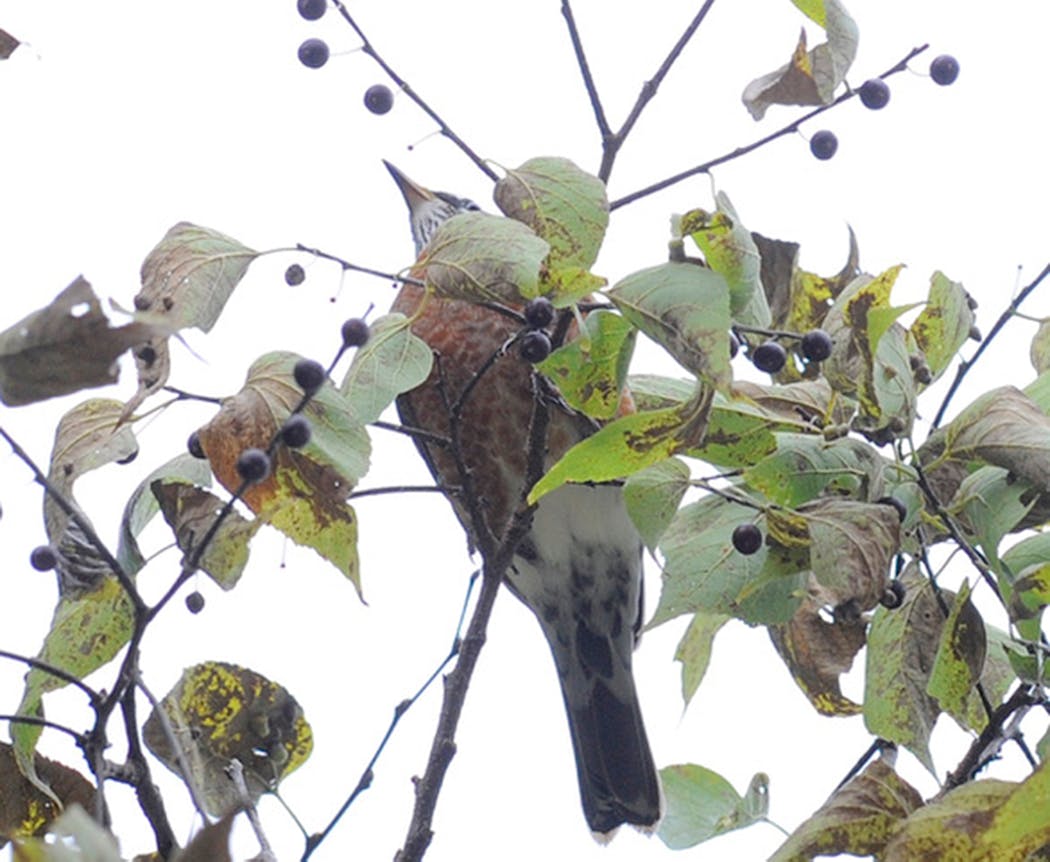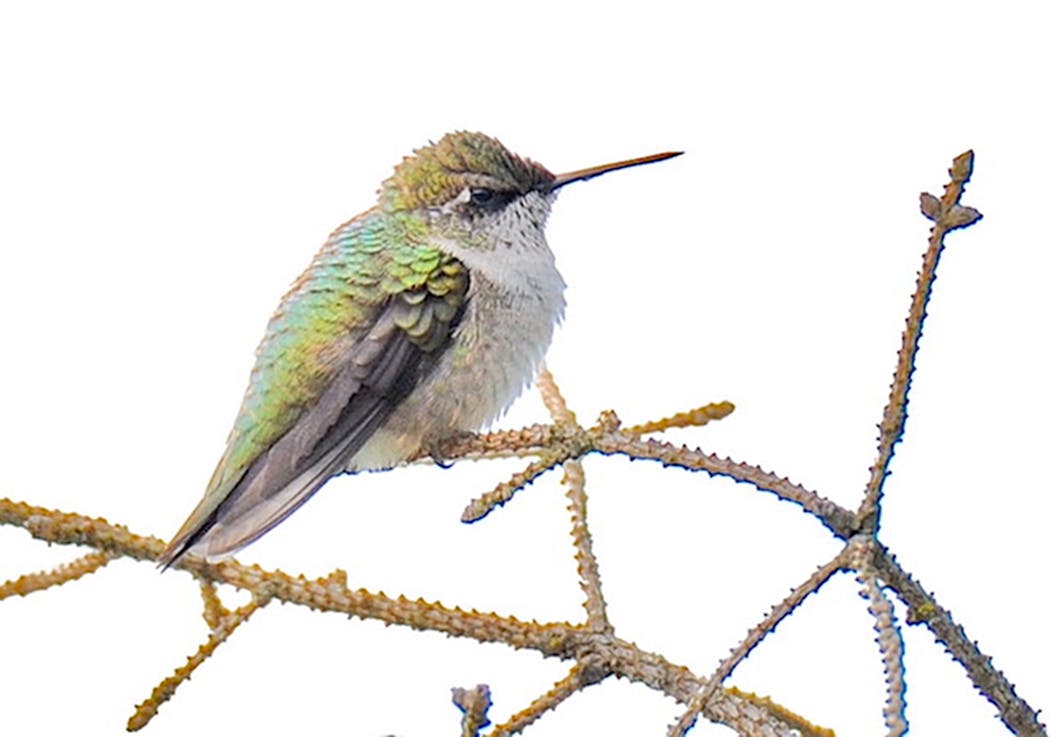Q: We're wondering if birds that overwinter here live longer lives than birds that migrate.
A: This is an excellent question, and it's still being studied by researchers. Migration is full of dangers, but then, living through a long, cold winter can also be hazardous. Some things we know: Spring and fall see the most bird deaths, and these are the periods when migrants are on the move. And the greater the migration distance (some birds travel only to the southern U.S., while others go as far as Argentina) the more deadly it is.
I checked in with Andrew Farnsworth, a researcher who studies migration at the Cornell Lab of Ornithology, and he noted that this is a complex issue. We humans change the landscape with our development, pollution and climate warming, negatively affecting all wildlife. Resident birds (aka sedentary birds) in an area undergoing major development might be affected more than migratory birds that can get away for part of the year. But then, migrants need stopover sites for feeding and resting along the way, and as these shrink or disappear, this affects their survival.
Recent studies suggest that some migratory birds may have smaller brains than their stay-home cousins, which may be an energy-saving strategy. And a smaller brain could be a factor in length of life.
Migratory birds live faster-paced lives than non-migratory birds, and they tend to have shorter life spans. But then they tend to raise larger numbers of offspring, which may offset some migration losses. Overall, it seems safe to say there is strong evidence that points to sedentary birds having a longer lifespan.
Where are the robins?
Q: I noticed a lack of robins in Duluth this fall, and others have said the same. Robins usually flock in to feed on my mountain ash berries, but not this year. Any input?
A: I checked with Laura Erickson, noted author and birder, who lives in Duluth and also is very fond of robins. She agrees that they were noticeably absent around town this fall, and she feels it was due to food abundance. "There's so much food everywhere up here, not just mountain ash berries, but lots of crabapples and other fruits," so robins were probably gorging themselves elsewhere, she noted. Early September is usually when large flocks of robins begin to pass over Duluth, but that big migratory push was delayed this year.
A service to science
Q: I found a dead hummingbird in my driveway, and did some online research on what to do. I followed directions to wrap the carcass in paper towels and then placed it inside a plastic bag and put it in the freezer with the date and location. But then what should I do with it?
A: You've done everything right so far, and here's the final step: The Bell Museum accepts salvaged bird carcasses that are in good condition (as fresh as possible and intact), according to Sushma Reddy, the ornithologist who oversees the museum's large collection of bird specimens. She notes that it is technically illegal for anyone who does not have a permit to pick up migratory birds and their parts, under the Migratory Bird Treaty Act. However, if they can get the specimen to the Bell, which has the appropriate permits, the carcass can be turned into a scientific specimen. "At the Bell, we ask that you note the details of where, when and by whom the bird was found and add this to the bag, then keep the carcass frozen. You can bring the frozen bird to the Bell Museum during open hours and the front desk should be able to take it on behalf of the bird collections," Reddy said.
Eye to eye
Q: I was watching a hummingbird at my neighbor's feeder when the bird suddenly flew directly at my head, then stopped and hovered in front of my nose for a few seconds before flying away. Do you have any idea why the bird did this? It was quite an experience.
A: There is something magical about being so close to a hummingbird. This is quite common behavior for a tiny bird that's very curious and relatively fearless. Something about you inspired the hummingbird to come in to check you out — possibly red on your clothing or a hat. You can find videos online of people wearing hats rigged with hummingbird feeders and hummingbirds feeding avidly from them (search for "hummingbird hats").
Roadside ravens
Q: My wife and I recently completed a road trip from Minneapolis to Alaska in our RV. In both Canada and Alaska, we frequently saw what appeared to be ravens on the highway shoulder, apparently feeding on something. I can't remember seeing so many ravens, mile after mile, around a highway. We rarely saw animal roadkill, so I ended up concluding that they were eating dead insects that deflected off the fenders and windshields of vehicles. What do you think?
A: That must have been quite a scene and yours is a very interesting question. Ravens have a diverse diet that can include large insects, amphibians, small mammals, birds, reptiles and carrion. They spend a lot of time foraging on the ground, so stalking the roadside would be natural for them. I found a thesis online by a graduate student who'd attached radio transmitters to ravens out West and found that they regularly foraged for arthropods, worms and other foods along roadsides. So I'd say you're exactly right, those ravens you observed from your RV probably were eating dragonflies, grasshoppers, frogs, salamanders, small birds and anything else that had been killed by vehicles. Beth Siverhus, a birder who lives in far northern Minnesota, says she often sees this behavior, especially on Hwy. 72 from Baudette to Waskish.
Hummingbird house?
Q: Would hummingbirds nest inside a birdhouse? I saw an ad for a hummingbird house on Facebook. It's very cute, but I don't think hummingbirds would use it.
A: Good for you for questioning this specious product. Hummingbirds are not "inside" nesters, they didn't evolve to enter tree holes or nest boxes to build their nests. Instead, female hummingbirds choose a twig in a tree or shrub to hold their nests. So, no, they'd never use this product, and I feel sorry for anyone who wastes money on it.
Chukars appear
Q: I live near Lake Como and recently was shocked to see a bird I'd never seen in Minnesota pecking beneath my birdbath. At first I thought it was a dove but a closer look and a search in a field guide showed it was a chukar. I'm wondering how it ended up in my backyard.
A: I'd have been shocked, too, to see this bird in St. Paul, and strangely, this was the second report I received in a week about this species. Chukars were introduced to this country as a game bird in the 1930, and have become established in the West. And in the East, game farms release captive-raised birds for hunting season, with escapees spreading widely. So your chukar might either be a western or an eastern bird.
Odd nest site
Q: What bird built its nest on my garage door opener? I took down the nest, but then it built another one, but never used it.
A: Since you noted that the nest had a dried mud base, I'd suspect the builders either were robins or Eastern phoebes.
St. Paul resident Val Cunningham, who volunteers with the St. Paul Audubon Society and writes about nature for a number of newspapers and magazines, can be reached at valwrites@comcast.net.
Paris crowns a new king of the crusty baguette in its annual bread-baking prize
Jerry Seinfeld's commitment to the bit
Music Review: Anitta welcomes listeners into her 'Funk Generation' on new album
Ask Amy: Give up on estranged brother






